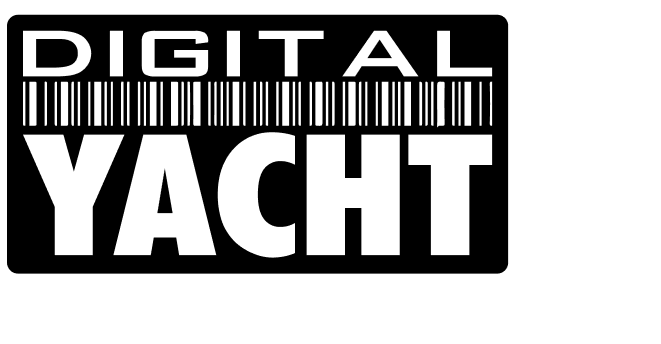How to interface NMEA 2000
Find out how to connect any of Digital Yacht’s products to NMEA 2000 networks.
Search the brand of your NMEA 2000 network and you will find wiring diagrams which explain how to connect a NMEA 2000 equipment on your navigation system .
Some of the larger manufacturer’s such as Raymarine, Simrad and Lowrance initially had their own “flavours” of NMEA 2000, using proprietary connectors which needed adaptor cables, but the good news is that now all of the major manufacturers have adopted the standard M12 “micro” connectors that were in the NMEA 2000 specification.
You cannot simply connect one NMEA2000 device to another device, by connecting them directly together using
a single cable. For proper communication to take place, both devices must be connected to a basic NMEA2000 powered network.

If this list does not include your navigation system, please contact us by email.
Digital Yacht NMEA 2000 Network
In this post, you can find out how to install a NavLinK2 NMEA 2000 to WiFi server on a Digital Yacht NMEA 2000 network.
Digital Yacht’s NMEA2000 starter kit allows for up to 3 devices to interconnect – say AIS, plotter and autopilot and comes complete with terminators and a power cable. It uses the high quality, nickel plated metal style connectors rather than the cheaper plastic type which can prove unreliable. The backbone is formed from a unique 6 way extension block with ports at each end that accommodate the terminators. Therefore allowing for a really neat and compact installation – ideal for behind the helm. It’s suitable for DIY installers as well as boat builders who want an easy and value priced solution for integrating and installing modern boat electronics. The connection system will work with all leading brands and can be expanded using standard components as required.
The Digital Yacht’s NMEA 2000 starter kit uses the standard NMEA 2000 connector so you don’t need any special adaptor cables to connect an NMEA 2000 equipment to the NMEA 2000 starter kit from Digital Yacht.
Simply find a spare “T Piece” connector or expand the NMEA 2000 backbone and the integral NMEA2000 cable of our NavLink2 will plug straight in, taking its power from the network and sending all received data over the WiFi on navigation apps & software.
Although this post is about how to connect the NavLink2, you can do the same with our other products which have NMEA 2000 interface (such as our AIS transponders).

If you are installing a larger NMEA2000 network and wish to have multiple 4 way T-Piece Backbone, they can be joined together either directly or via a drop cable (as shown below). Always fit the terminators on the end of the backbone.

Garmin NMEA 2000 Network
In this post, you can find out how to install a NavLinK2 NMEA 2000 to WiFi server on a Garmin network.
Garmin adopted the standard NMEA2000 connector system, rather than use their own proprietary connectors and so connection of our NavLink2 to a Garmin network is even easier, without the need of any special adaptor cables.
Simply find or add a spare “T Piece” connector and the integral NMEA2000 cable of our NavLink2 will plug straight in, taking its power from the network and sending all received data over the WiFi on navigation apps & software.
Although this post is about how to connect the NavLink2, you can do the same with our other products which have NMEA 2000 interface (such as our AIS transponders).

Raymarine SeaTalkNG network
In this post, you can find out how to install a NavLinK2 NMEA 2000 to WiFi server on a SeaTalkNG network.
The diagram below shows how our NavLink2 would connect to Raymarine’s popular entry level A65 Multi-Function Display (MFD), the first of this new breed of NMEA2000 only chart plotters.
Raymarine’s version of the industry standard NMEA2000 interface, called SeaTalkNG, is fully compatible with NMEA2000, but features their own connectors and additional proprietary PGN messages. To connect our NavLink2 unit to the Raymarine Network, it is necessary to purchase a SeaTalkNG to DeviceNet (NMEA2000) cable from Raymarine.
Connecting our NavLink2 to an NMEA2000 network could not be easier as it takes power from the network and puts data on to the network via its NMEA2000 cable (0.75m) which is terminated in a standard NMEA2000 male connector. To connect NavLink2 to the Raymarine network you will need to purchase the Female version of the Raymarine adaptor cable which is their Part Number A06045 and is very cheap.
Although this post is about how to connect the NavLink2, you can do the same with our other products which have NMEA 2000 interface (such as our AIS transponders).

Simrad SimNet network
In this post, you can find out how to install a NavLinK2 NMEA 2000 to WiFi server on a Simrad network.
Simrad adopted their own proprietary connector system for NMEA2000 (SimNet) and so connection of our NavLink2 will require a SimNet to NMEA2000 adaptor cable (Simrad P/No 24006199).
Once you have the SimNet to NMEA2000 adaptor cable, connect this to the standard NMEA2000 cable that is included with our Navlink2 and then find a spare SimNet connection on the network to plug the adaptor cable in to. The NavLink2 will then take its power from the SimNet network and send over the WiFi all the data on the SimNet network.
It should be noted that all of the latest B&G Zeus Chart Plotters also use SimNet network connectors and so our NavLink2 will work with these chart plotters in the same way.
Although this post is about how to connect the NavLink2, you can do the same with our other products which have NMEA 2000 interface (such as our AIS transponders).

